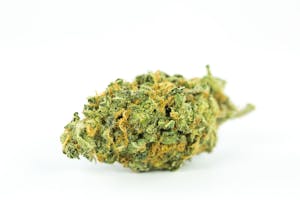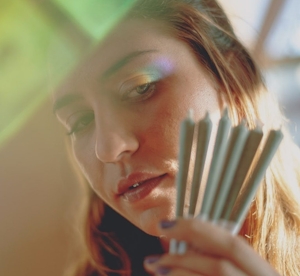
How To Come Down From Shrooms
Commencing your magic mushroom trip can be enlightening and enjoyable, offering unique insights and heightened sensory experiences.
Whether you’re brewing a shroom tea, sprinkling it over your meal, or going for it straight-up, preparation goes beyond just the method of consumption — it’s a crucial step owing to the psychedelic terrain ahead.
Prior research is indispensable to set the right expectations, ascertain a suitable dosage, and brace oneself for the various phases of a shroom trip. While the journey can be rewarding, it has the potential to veer towards the unpleasant if not navigated wisely.
This article aims to guide new mushroom enthusiasts on coming down from shrooms, especially if faced with a challenging trip. Armed with knowledge, one can better manage the experience, ensuring a safe and inspiring exploration of the psychedelic realm.
Phases Of A Shroom Trip
Navigating the psychedelic waves of shrooms can be a delightful odyssey with the caveat of potentially turbulent waters. The risks of mental confusion or extreme anxiety make the presence of a seasoned trip sitter or a trained facilitator a prudent measure for ensuring a safe magic mushroom experience. It may be wise to earmark a day post-trip for rest and reflection, aiding a smoother re-entry into the routine life.
Now, let’s delve into the various stages that punctuate a shroom trip, starting with the initial onset that gently nudges you into a different realm of perception.
Initial Onset (30-60 minutes post-ingestion)
The journey commences with a gentle segue into an altered consciousness. During this phase, one may be swept into a wave of euphoria, a spark of creativity, and a more vivid perception of colors and sounds.
Come-Up (60-90 minutes post-ingestion)
As the shroom effects amplify, this phase might bring about a cocktail of anxiety and excitement. Some might face nausea or an increased heart rate alongside the onset of visual and auditory hallucinations.
Peak (2-3 hours post-ingestion)
The trip crescendos during the peak, where the psychedelic effects are at full throttle. Intense hallucinations, time distortion, and a pronounced sense of ego dissolution are the typical hallmarks here.
Plateau (2-3 hours post-ingestion)
As the peak effects plateau, this phase signifies a gradual descent towards earthly consciousness, albeit with a trailing sense of other-worldly connectivity and calm introspection.
Come-Down (4-6 hours post-ingestion)
The come-down phase signifies a gentle tapering off of the psychedelic effects, guiding a gradual return to baseline consciousness. This phase may bring about a sense of fatigue, mild melancholy, and a diminished appetite.
Resolution or ‘Afterglow’ (several days post-ingestion)
The trip’s residue often lingers in the form of an afterglow. This phase heralds a period of clarity, boosted creativity, and a rejuvenated sense of well-being.
How Long Does A Shroom Trip Last?

The length of a shroom trip largely depends on the dosage taken. With a low dose of less than 5mg psilocybin (under 0.8 grams of dried shrooms), expect a six-hour journey. The trip extends to about seven hours with a dosage ranging from 5 to 15mg (or 0.8 grams to 2.4 grams of dried mushrooms), or nearly 7.5 hours beyond this range.
It’s important to note that the trip duration starts from the onset of effects, not the time of ingestion. Individual biochemistry and mushroom strain can alter this timeline, introducing variability. After the primary effects diminish, a mild afterglow may linger up to 24 hours post-trip, with full functionality retained.
The combination of dosage, personal physiology, and mushroom variety dictates the unique timeline of each psychedelic journey, highlighting the need for a personalized, well-informed approach to dosing.
Tips To Come Down From Shrooms
Navigating through a shroom trip can be a unique and profound experience. However, as the effects begin to wear off, transitioning smoothly back to a normal state of consciousness is essential. The following tips provide practical guidance on returning from a shroom trip, ensuring a safer and more comfortable return to reality.
Move Your Body
Doing gentle physical activity can help metabolize psilocybin, the hallucinogenic component of magic mushrooms, and expedite its exit from your system. Stretching, yoga, or a calm walk can help ease residual tension and promote a smoother come down.
Hydrate
Keeping hydrated is crucial during the comedown. Water can help flush out the psilocybin from your system and alleviate headaches or other discomforts associated with dehydration.
Eat Something
Although eating might not be appealing during a trip, it can serve as a grounding anchor when looking to descend from the psychedelic clouds. Incorporating certain nutrient-rich foods and supplements can aid in glucuronidation, a process that helps your body efficiently eliminate psilocybin. For instance, curcumin, found in turmeric, supports this process. Everyday kitchen staples like apples and kale also prove beneficial. A balanced, light meal or snack—such as fruits, nuts, or a refreshing smoothie—can be a wise choice.
Change Your Environment
A less-than-harmonious trip can often be nudged back on course by tweaking the environment around you. The sensory input from your surroundings plays a pivotal role in steering the direction of your trip. If the current setting is igniting discomfort, it’s a wise move to transition to a more serene and comfortable space. Simple alterations like dimming the lights, shifting to a quieter room, or stepping out into the calm of nature can transmute the vibes considerably.
Seek Medical Attention
While direct fatalities from psychedelic mushrooms are rare, caution is paramount to navigate any unexpected twists during a trip. Psilocybin, the active compound in magic mushrooms, generally leads to fewer emergency room visits compared to other psychedelics. Yet, when medical help is needed, it often stems from accidental ingestion of toxic mushroom varieties.
Two common scenarios warranting medical attention are a distressing “bad trip” or physical discomfort. If you or someone you’re with requires medical aid, hospitals typically administer intravenous fluids and a benzodiazepine like Xanax, Klonopin, or Valium. These medications enhance the inhibitory neurotransmitter GABA activity in the brain, fostering a calmer, sedated state to alleviate severe anxiety or agitation.
If overwhelming nausea arises solely from the trip and there’s certainty about the mushroom type ingested, rehydrating with electrolyte-rich drinks like coconut water or Gatorade can help. Over-the-counter solutions like Pepto Bismol may also offer relief.
Lastly, if there’s any doubt about the mushroom type ingested, especially given the vast array of toxic mushroom varieties, seeking immediate medical help is crucial.
Herb Recommended Products:
READ MORE










